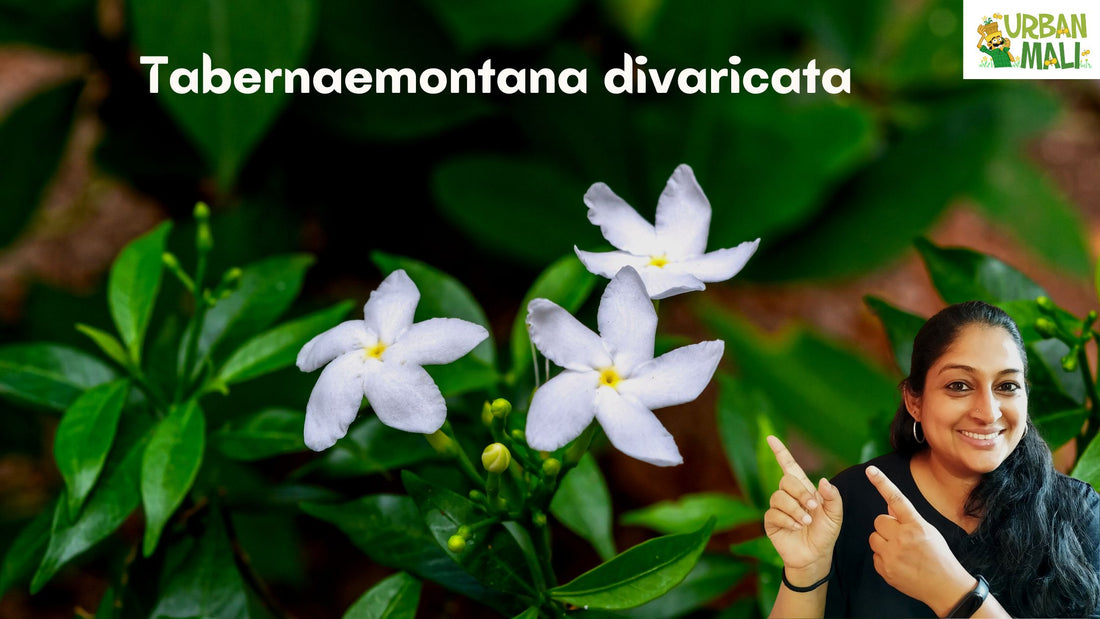Tabernaemontana divaricata is commonly called pinwheel flower, crape jasmine, East India rosebay, and Nero's crown. It is an evergreen shrub or small tree native to South Asia and Southeast Asia. It is grown indoors as well outdoors for its attractive flowers and foliage. The stem exudes a milky latex when broken, hence the name milk flower.
This plant grows up to 1.5 to 1.8 meters in height. It bears big glossy green leaves and white blossoms. The flowers are typically pinwheel-shaped. The flowers have a mild pleasing fragrance.

Buy Tabernaemontana divaricata plant
Tabernaemontana divaricata dwarf
Dwarf Tabernaemontana divaricata is a shrub with flowers similar to gardenias. The shrub is common in India and grows to 2 feet. They can be grown easily in containers and indoors. Through root pruning and branch pruning, they can be made into bonsai.
Medicinal uses of Tabernaemontana divaricata
The broken stem exudes a toxic milky latex. However, in Ayurveda, plant parts are used in prescribed quantities to treat hypertension, headaches, scabies, and toothaches. The beneficial properties of Tabernaemontana divaricata are antioxidant, anti-infection, anti-tumor action, analgesia, and the enhancement of cholinergic activity in both peripheral and central nervous systems. This plant is also used to treat snake bites and scorpion stings. In addition, wood is used in perfume and incense making.
How to grow Tabernaemontana divaricata plant?
Propagation
Tabernaemontana divaricata can be propagated through seeds. But the easiest way is through cuttings. Take 15cm cuttings. Remove the lower leaves and plant them in moist soil. In 3 weeks, roots will develop, and a new leaf will appear.
Location
Tabernaemontana divaricata prefers 6-7 hours of sunlight. Therefore, when growing indoors, keep them near a southeast-facing window.
Soil
Tabernaemontana divaricata likes soil that is rich in organic matter and has good water-draining capacity. Once established, the plant can tolerate dry soil conditions. Mulching helps keep the soil moist.
Water
Regular watering is required during the early stages of the plant. However, once the plant gets established, you may want to let the soil dry between watering.
Fertilizer
Tabernaemontana divaricata needs phosphorus and nitrogen to grow well. Use good quality vermicompost or any organic manure.
Pests
Tabernaemontana divaricata can be attacked by pests that eat the leaves. You can manually remove such insects or use an organic neem oil solution.

Next step
Gardener services
Landscaping services
Online nursery
Organic pesticides and fertilizers
Extra reading
Flowers that Thrive in Poor Soil
Benefits of Growing Native Plants
Happy Gardening!
Dr. Vandana K.

